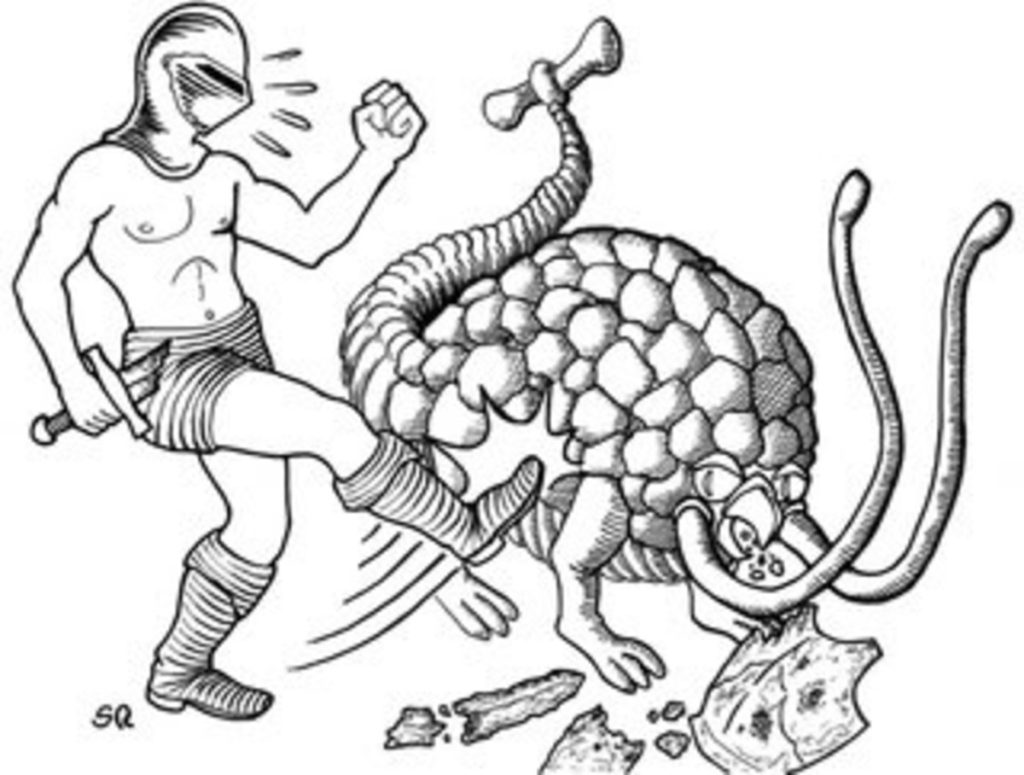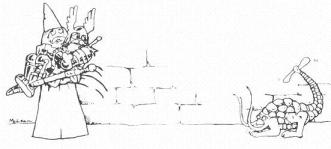Rust Monsters in Dungeons and Dragons came into being while Gary Gygax was developing and playing Chainmail. He was on the lookout for potential new monsters and began looking through dime store toys for inspiration. He came across a bag of “prehistoric monsters” which gave him ideas for new creatures. From this same bag of creatures he developed the Rust Monster, The Bulette and the Owlbear. Three great monsters from one bag of cheap plastic toys!
Of course, he was looking in other places, as well. Fantasy stories, Tolkien, Sword and Sorcery stories and pulp fiction were some of the sources. As was ancient mythology. Nothing was spared to come up with the hundreds of monsters later included in the various Monster Manual and Fiend Folio editions.
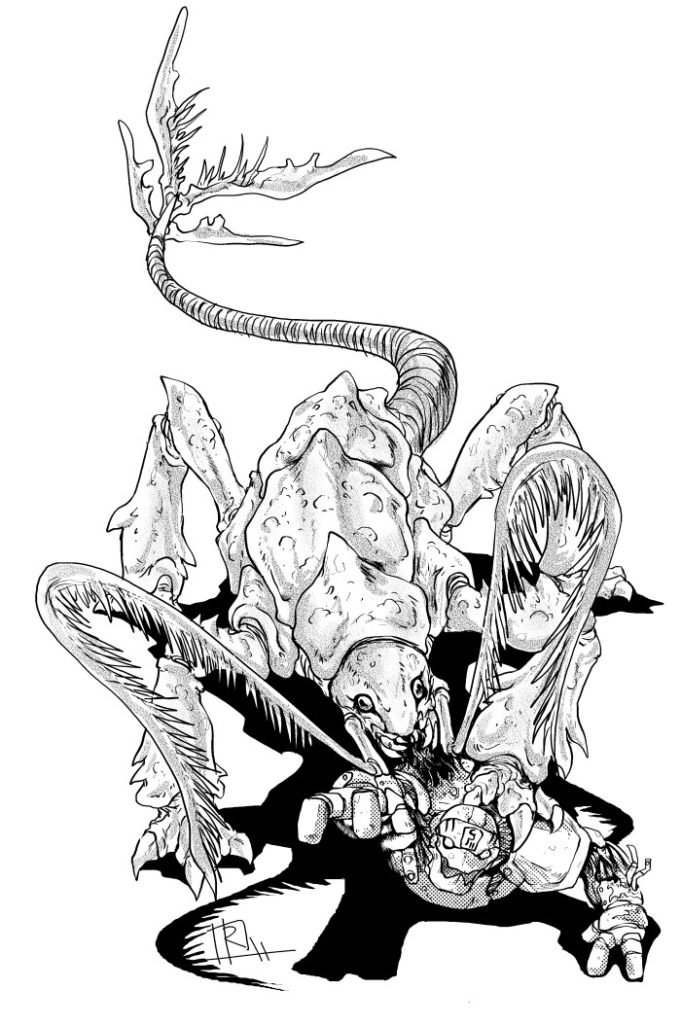
One particular monster from this bag of plastic toys drew Gary’s attention more than the rest. These toys were from Hong Kong and were representative of the Japanese “Kaiju” films which included Ultraman and Godzilla. One of these creatures had a propeller on the tail and looked sort of like a lobster. This creature became the Rust Monster.
The rust monster consumes metal. It has an almost insatiable hunger for this substance. It can smell metal and will just about always go in search of this smell. Ferrous metals such as iron and steel are it’s preferred sources of food.
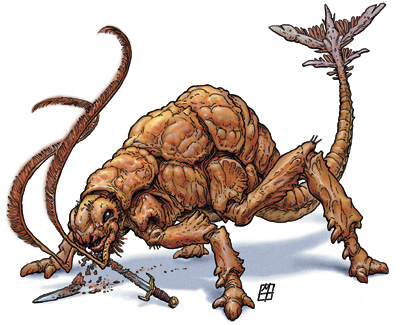
Rust Monsters in Dungeons and Dragons various editions
Rust monsters were with us from almost the very beginning. They were first introduced in Dungeons and Dragons with the Greyhawk Supplement in 1975. The creature was described as “inoffensive” but the “bane of metal with ferrous content.”
The rust monster was included in Basic as well as the black box rule book.
In Advanced Dungeons and Dragons 1st Edition the rust monster appeared in the Monster Manual. The picture showed a slightly different monster than that of the plastic figure seen by Gary Gygax. This one shows a creature with two antennae and four legs with a tail and a propeller on the end of the tail The body is shaped like a low mound of rocks with two small eyes in the front and a small mouth.
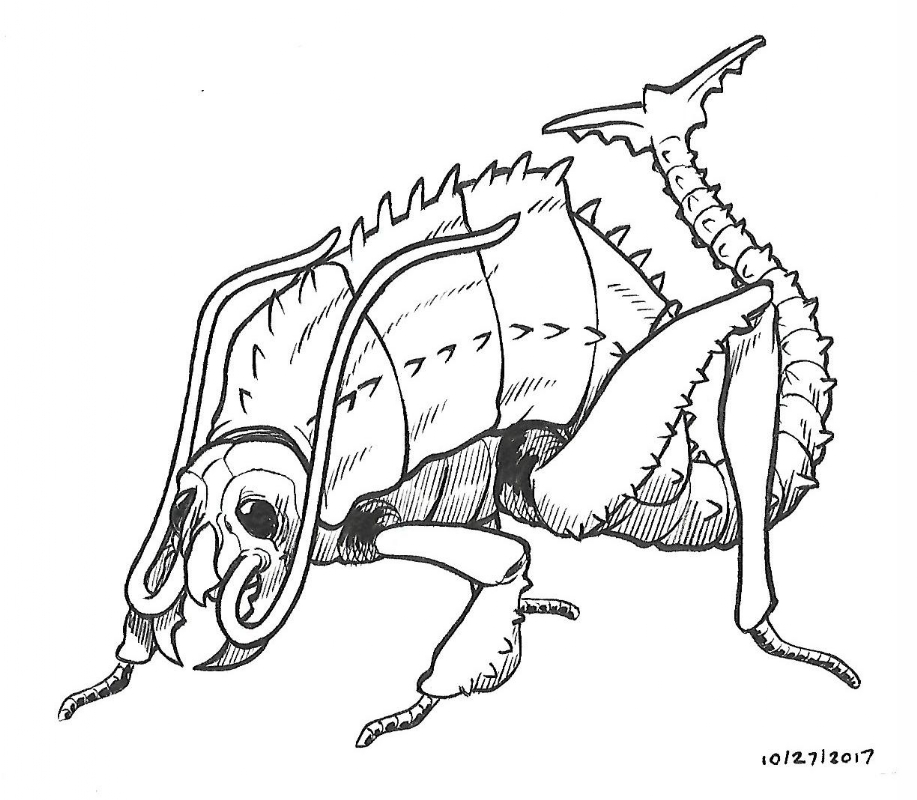
The first edition rust monster was about three feet high and five feet long. It would consume any metal but had a preference for ferrous metals. Copper, gold, platinum and silver would still be at risk near such a creature. It could smell such metals at 90 feet and would run, quite quickly, towards metal when sensed nearby. For such a small creature it could move extremely fast. Far faster than most adventurers. The movement rate was 18″. And a heavy armored adventurer would move at much lower rates of speed.
The second edition Monster Manual slightly changed the appearance of the creature. The propeller was changed to a small paddle. The colors were changed to yellow/tan for the underneath and reddish brown for the top. The creature was described as smelling like rusty metal.
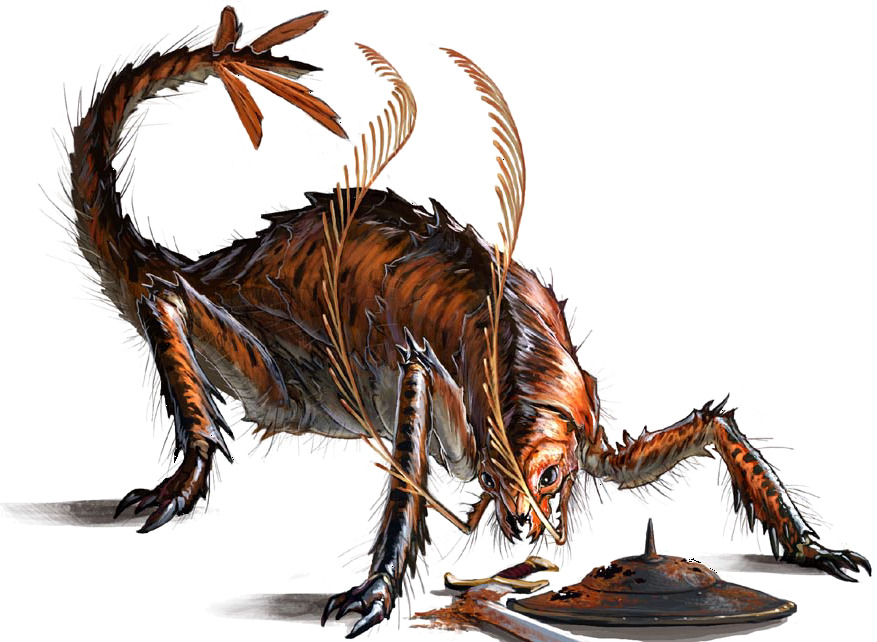
Third edition changed the appearance again. Now the antennae were made to look more feather like. The legs were made more insect like. And the speed was reduced to 12″. This made them far easier to run away from.
Fourth edition continued the appearance from third edition but doubled the movement rate. Now the creature was difficult to run from again. The creature appeared in the Monster Manual II for fourth edition.
Fifth edition changed the appearance a little more. The head looks almost insect like. The feather like antennae continued but the end of the tail looks even more menacing than before. It looks almost like a spiked weapon. No longer does the creature look like a mound of rocks. Now it looks almost snail like. Movement rate is now 40 feet.
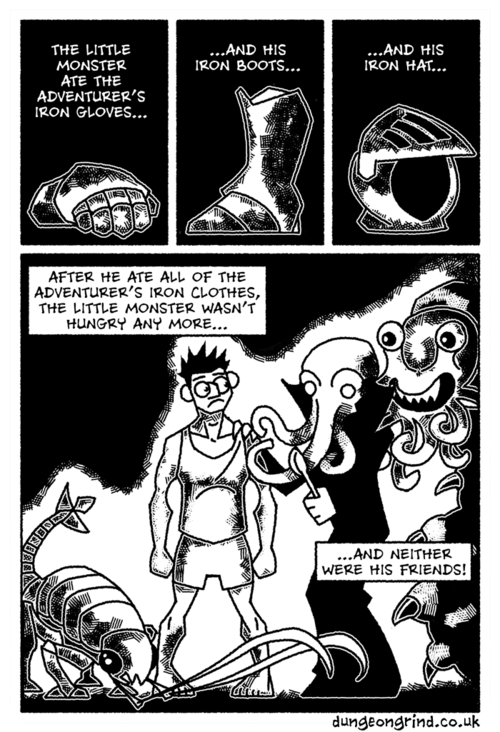
How does one escape from a Rust Monster in Dungeons and Dragons?
Well. Clearly running won’t help. At least not in most of the editions. The movement rate is faster than the slowest members of most parties. The slowest members are typically the fighter types wearing heavy armor. The non armored members of the group are at far less risk. It is the fighter types that will desperately want to get away from this creature. So how does one get away from it?
As the creature loves metal it is advisable to give it some. Throwing down gold, silver or platinum may satisfy the creature for a little while. Throwing down steel or iron might be more satisfying. Old weapons and armor would be good choices. Iron spikes are another possible choice. And if all else fails….treasure will do. They will just about always stop for a round or two to eat when offered such metals.
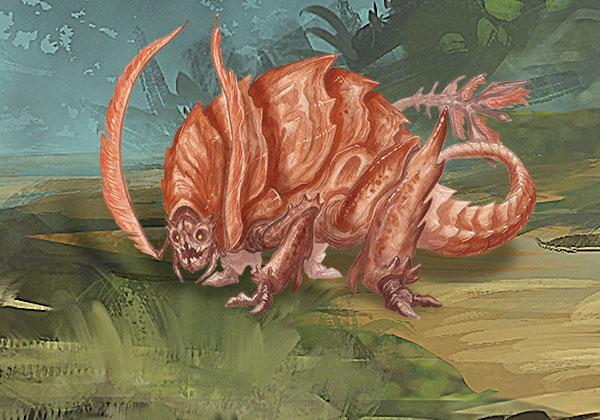
What other attacks can a Rust Monster in Dungeons and Dragons make?
None. They have no claw attacks. Their bite does no damage. And their tail is only harmful to metal. These creatures are basically harmless. But they are quite harmful to the weapons and armor of the party members.
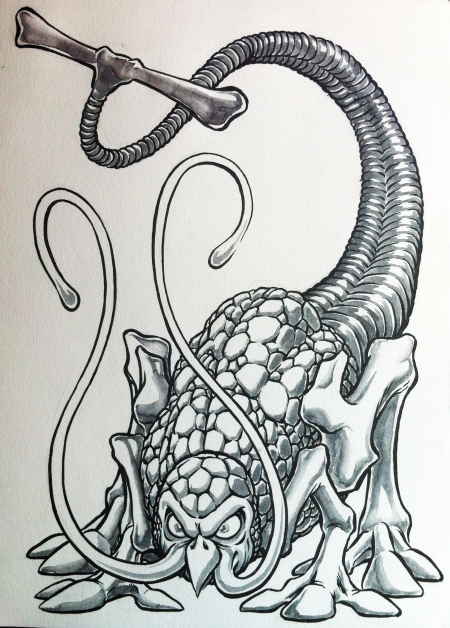
Rust Monsters in Dungeons and Dragons are dangerous to metal
Metal is the source of food for these creatures. Any metal touched by one of the antennae of the rust monster is corroded instantly and turned to dust and small chunks of metal. This dust and small chunks of metal is then easily consumed by the Rust Monster as food. They prefer refined metal over metal ore when given the choice.
Any metal is at risk. They prefer ferrous metals but they will settle for any other metals if that is all that they can get. In 1st edition the metal receive a saving throw if it was magically enhanced. The chance of success as ten percent per plus of magical enhancement. Metal failing the saving throw instantly fell to pieces and was then consumed by the creature.
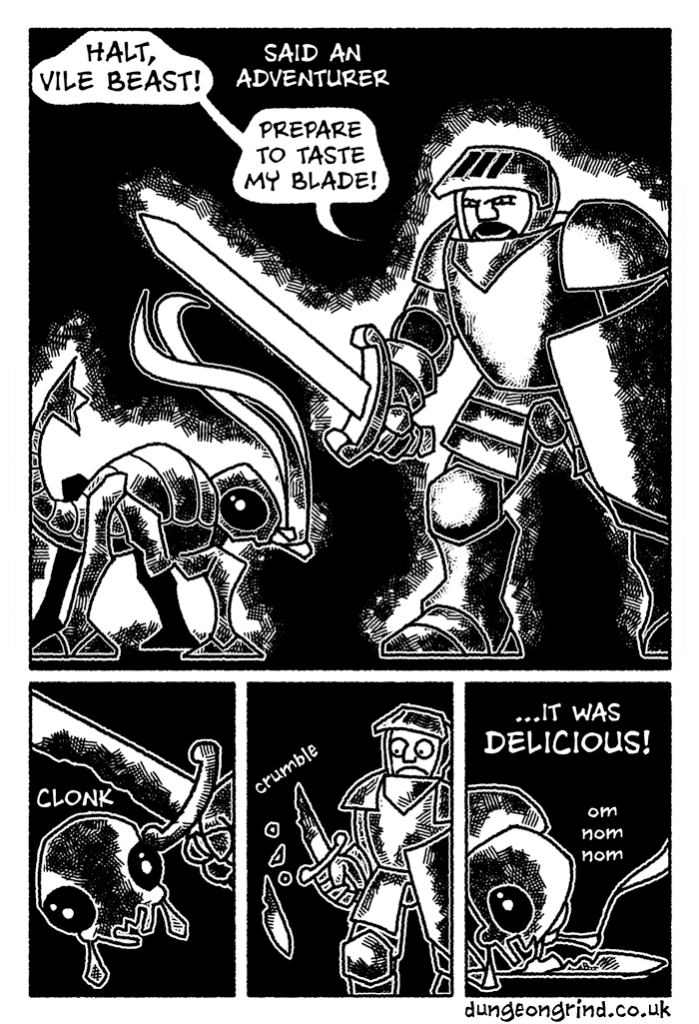
These creatures like dark places
Subterranean places are their preferred residence. They roam these places in search of food. Tombs, crypts, dungeons and other such places are their favorite homes. Caverns will also sometimes have rust monsters in residence. A lair will typically have one or two rust monsters. Occasionally they might have one offspring in the lair. These creatures are also often found in the Underdark.
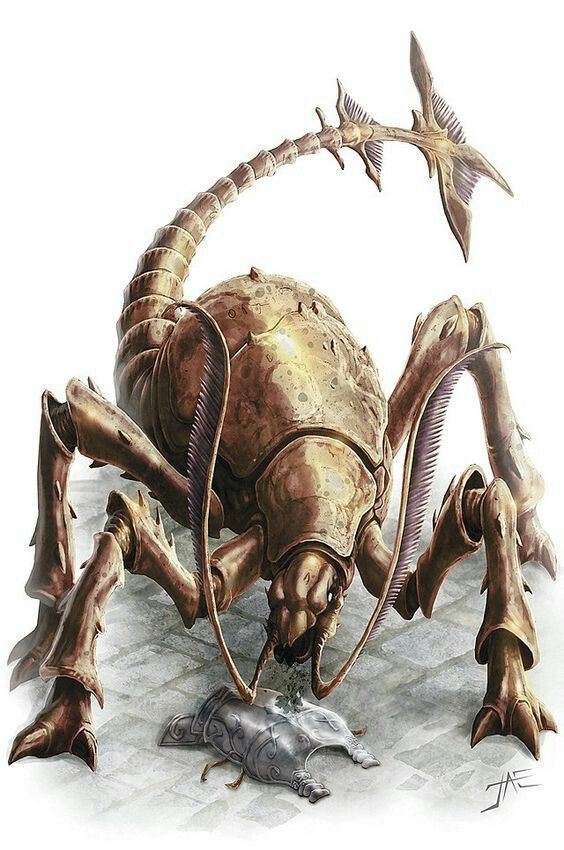
Treasures of Rust Monsters in Dungeons and Dragons
As metals are used as food the creature rarely has any treasure other than rocks. But some of these rocks are often gems of some value. Dwarves and gnomes hate these creatures with a passion as these races are known for their metal working and mining. Rust monsters work against such races as they tend to eat the profits….literally….
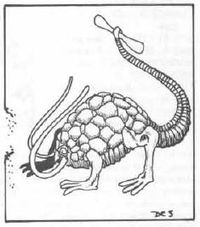
Rust Monsters work well and play well with others
The rust monster is not an aggressive species. Creatures and races that are not concerned about metal are often known to live among rust monsters. Rust monsters often are the cleaners of dungeons and they eat all of the discarded metals. Carrion crawlers are known to live in the same places as rust monsters eating all of the organic material as well. And with a gelatinous cube in the dungeon the floors are likely to be completely swept clean daily.
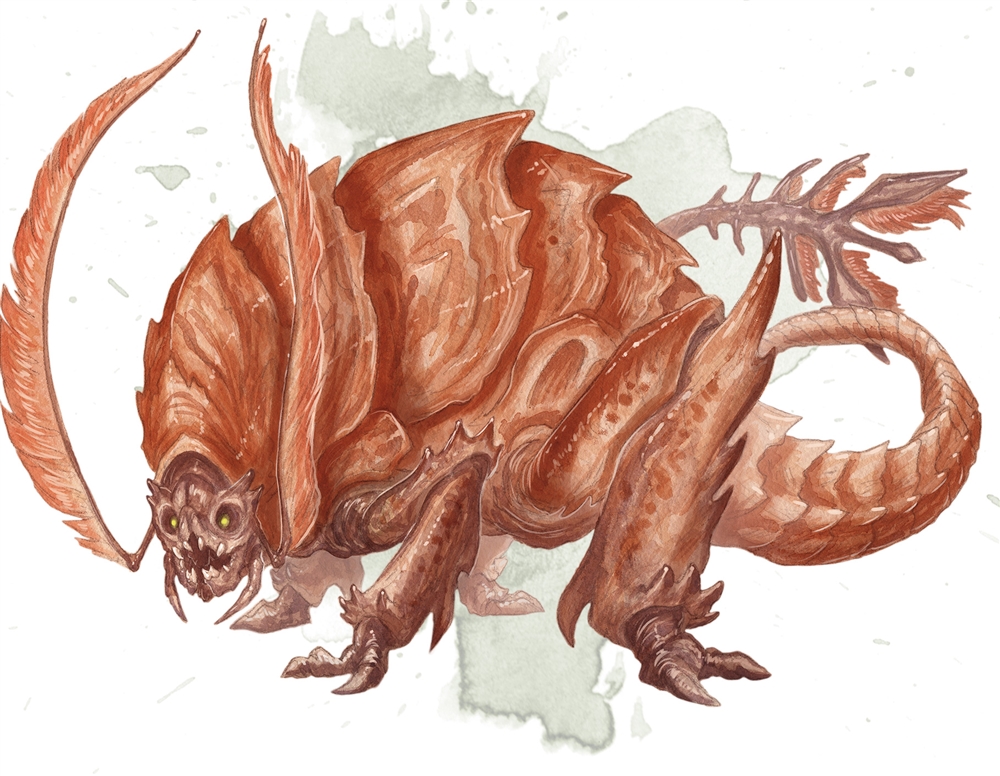
These creatures will ignore those not wearing or carrying metal. Wizards have been known to walk right up to these creatures and not even be paid any attention at all by them. But anyone wearing or carrying metal will find a far different response. The creature will act aggressively and try to touch the metal with it’s antennae.
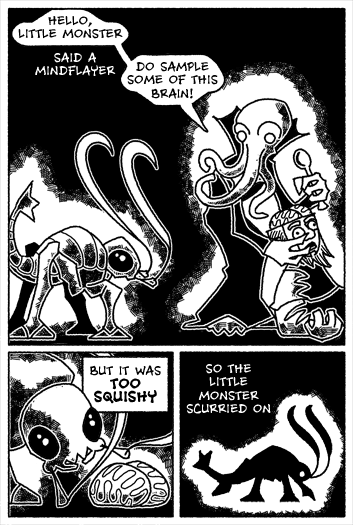
Rust Monsters are the one thing that strikes fear into every fighter (or ranger or paladin)
The rust monster will always choose the biggest source of ferrous metal when given options. When they encounter a party with more than one person wearing armor and carrying weapons they are likely to go after the person wearing full plate mail. And since this person is likely to be the slowest member of the party…..they will probably get caught by the creature.
These creatures are the bane of adventurers. They do not mean to be. But they are. No dungeon delver is safe once their armor has been eaten and their weapons are taken for dessert! Be wary of these creatures for even though they are not evil or aggressive they can still be quite deadly whether meaning to be or not.
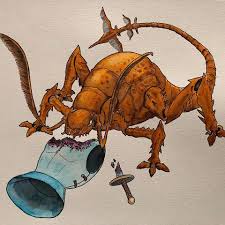
If you enjoyed this article then you might enjoy these:
- Dungeon maps
- Random encounters
- Intoxication
- Use of Cover
- Insanity
- Spell Components
- Magic
- High Level Campaigns
- Miniatures
- Dungeon Design
